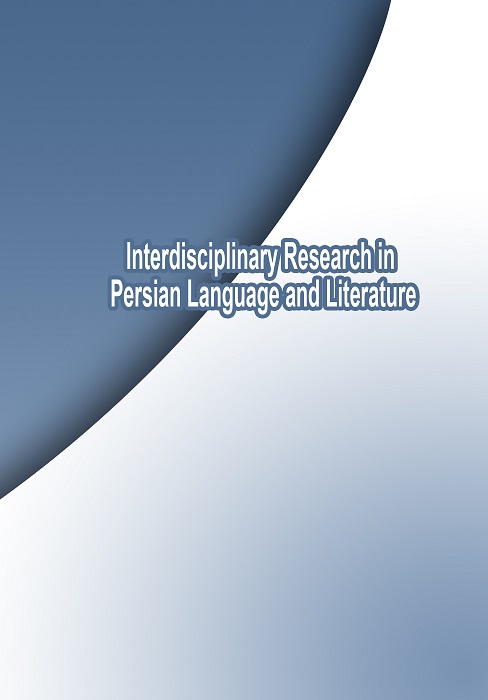Critical Study of Iranian Movie »When we are all sleeping «on the Basis of Theories of the postmodern Novels
Document Type : Research Paper
Authors
1 Allameh Tabataba';i University, Tehran, Iran
2 Allameh Tabataba'i University, Tehran, Iran
Abstract
Contrary to the French school of comparative literature, which according to it, only two written texts can be compared, in the American approach, it is possible to compare literary texts to various arts, including cinema. Since novels and films have many similarities, they are similar in many respects, and they are two comparable genres. These commons provide a good field for discussing a film from the perspective of a new literary theory and criticism, and allow us to use the concepts and terminology that we normally know as a tool for discussing about the novel to critically explore the structure and devices and themes of the film. On the other hand, in recent years, the term "postmodernism" has become popular in critical discussions about the novel, and many new fiction writers show much fascination in writing fiction with postmodern style. Therefore, in this research, firstly, by examining the views of some of the most important thinkers of postmodern literature, nineteen techniques used in postmodern novels were extracted and with qualitative analysis method, use of them in an Iranian movie (i.e. When we are all sleeping) were examined. The results of the studies showed the close proximity of literature and cinema (as a visual text) and the ability to compare these two written and visual texts. We realized that most of the techniques which are applied in writing postmodern novels were also used with high frequency in the reviewed Iranian film.
Keywords
Introduction
Reviewing the comparability of the elements and techniques of postmodern novels with the movie When We are All Asleep from Bahram Beyzaie.
Methodology
For doing this research, first, we studied theoretical basis and other information about postmodern novels though various sources. Then we collected techniques of postmodern novels and took several notes. After that among the movies of Iranian cinema that have been made in the postmodernist style, the film "When We are All Asleep" was chosen. At last by reviewing this movie, the main techniques used in it have been extracted, classified and analysed.
Discussion and Results
After reviewing the film When We Are All Sleeping, we come to the conclusion that among the 19 techniques of postmodern novels, in the mentioned film, six techniques i.e. "ontological content", "fragmentation", "irony", "verisimilitude", "the writer’s presence in fiction" and "the death of the author's authority" have been widely used.
Conclusion
In the film When We Are All Sleeping, six techniques i.e. "ontological content", "fragmentation", "irony", "verisimilitude", "the writer’s presence in fiction" and "the death of the author's authority" have been widely used. Hence, the mentioned film has been relatively successful in applying postmodern novel techniques. Meanwhile these studies indicate that there is no significant difference between the characteristics of postmodern works in literature and cinema. Despite this result, we should consider the own characteristics of the film industry and the use of video narration (the language of the video camera) and audio and the available trucages in this industry (such as makeup, special effects, etc.). In other words, although almost all techniques of the postmodern novel can be used in cinema, the substantive difference between written and visual literature must be considered. For example in film industry, showing a video camera or doing make-up in a movie scene, is a clear demonstration of the "verisimilitude" technique, which is obviously reflected by a different manner in postmodern novels.
Keywords
Postmodernism & Postmodern novel, Cinema of Iran, Postmodern cinema, written text, visual text.
References
Beyzaie, B. (Producer & Director) (2009). When We Are All Asleep.VCD. Tehran: Honar Namaye Parsian. [In Persian]
Cuddon, J. A. (2008). A Dictionary of Literary Terms. Translated by: Firouzmand. K. Tehran: Shadgan. [In Persian]
Dad, S. (2013). Dictionary of Literary Terms. Tehran: Morvarid. [In Persian]
Omid, J. (2010). The Iranian Films Encyclopedia.Vol. 4. (1999- 2009). Tehran: Nega. [In Persian]
Payandeh, H. (2007). The Postmodern Novel And Film: A Monograph on the Structure and Techniques of “MIX”. Tehran: Hermes. [In Persian]
ــــــــــــــــــــــــــــ(2011). The Discourse of Criticism: Essays in Literary Criticism. Tehran: Niloofar. [In Persian]
ــــــــــــــــــــــــــــ (2014a). The Short Story in Iran (Vol.3. Postmodernist Stories). Tehran: Niloofar. [In Persian]
ــــــــــــــــــــــــــــ (2014b). Opening The Novel: Critical Readings of Contemporary Iranian Novels. Tehran: Morvarid. [In Persian]
Tadayoni, M. (2009). Postmodernism In Iranian Fiction. Tehran: Elm. [In Persian]
Volume 1, Issue 2
September 2022Pages 137-156
- Receive Date: 19 April 2022
- Revise Date: 05 June 2022
- Accept Date: 20 June 2022
